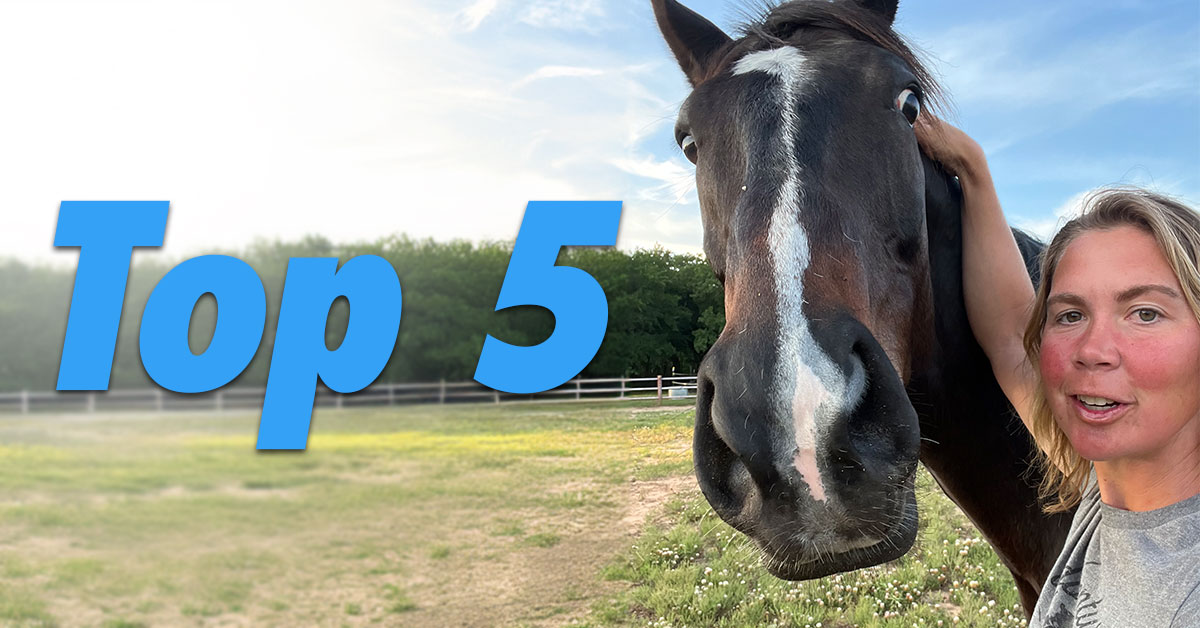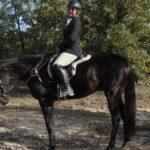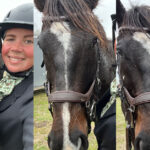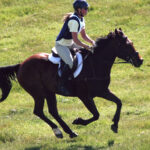One year ago I brought home my now 7-year-old Off the Track Thoroughbred (OTTB). And what an interesting year it turned out to be. Becoming a first time Thoroughbred owner has been expensive, educational and sometimes down right annoying, especially as the checks keep escaping my bank account. That said, I’d one hundred million percent do it all over again. I probably would’ve peppered in a little bank robbery once or twice a quarter, but I’d still do it again. I’m stupidly in love with my big, goofy OTTB and every time we’re out together, my inner child giggles with glee. So sure, he’s scampered off with all my money and what few remaining braincells I had. But the little girl I once was is cheering me on, and that, as they say, is priceless. Who wants to rob banks later?
Bear in mind that this is MY experience. Other OTTB owners may have had different experiences. The point here is to share my triumphs and woes to better illustrate what you might be getting into if you choose to bring one of these horses into your life.
Disclaimer out of the way, here are the top five things I’ve learned in one year of owning an OTTB.
One: He’s expensive to maintain
Let’s open with the big one. Hondo Lane is like an Italian sports car: incredible when you get him on the open road, spends a lot of time in the shop. This has stemmed from two main issues: crap feet and pain in the body (a lot of that due to his crap feet). Thoroughbreds have notoriously bad feet which I didn’t realize until bringing one home. Isn’t knowledge fun?
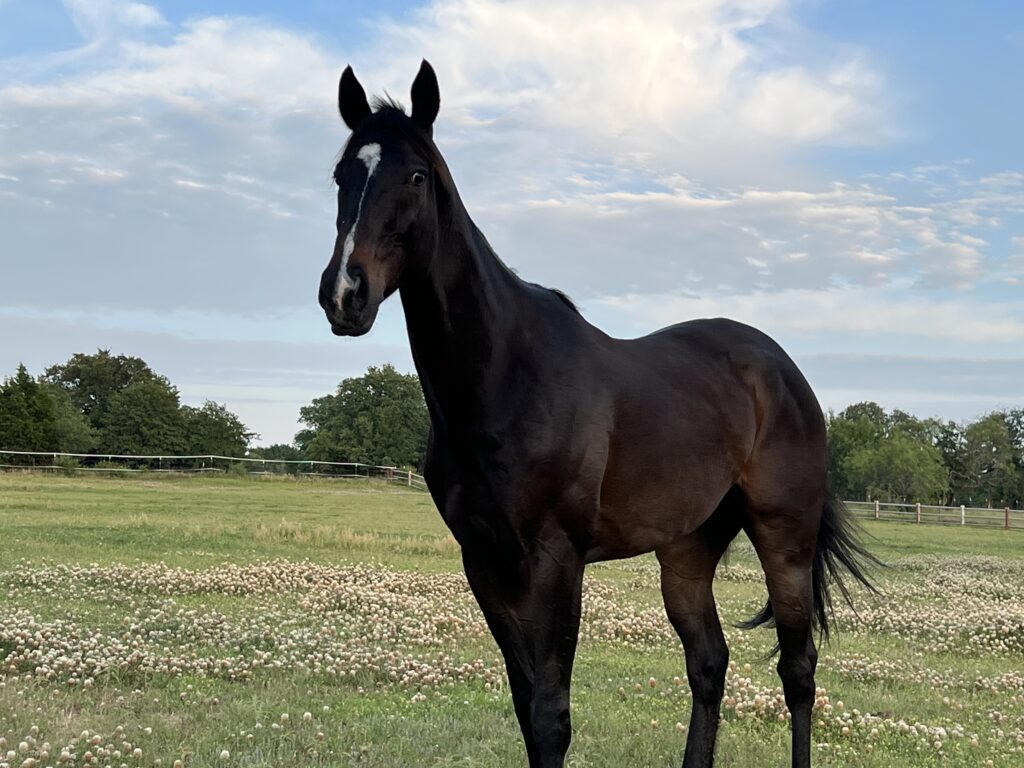
My other five horses have had no issues with their tootsies. Then Hondo came in like a glass slipper hiking the Appalachian trail. Thin soles and one foot with a low heel. This has translated into all kinds of issues up to and including tension in his entire body. He’s now also taking magnesium supplements in addition to copper, zinc, biotin and jiaogulan.
But Courtney, you may ask, did he live like this his whole life? No. He had front shoes when I first got him. And he kept them for all of two weeks before he pulled one off and I took off the other. I then would put on Nisha’s Renegades (photo below), but I wanted a better long term solution like him growing his own soles. I’m a firm believer in barefoot whenever possible and adding as needed. This is a much longer opinion for another post if necessary. But the more the horse is natural and correct on their own, the better it is for them. Hence needing to correct his natural foot.
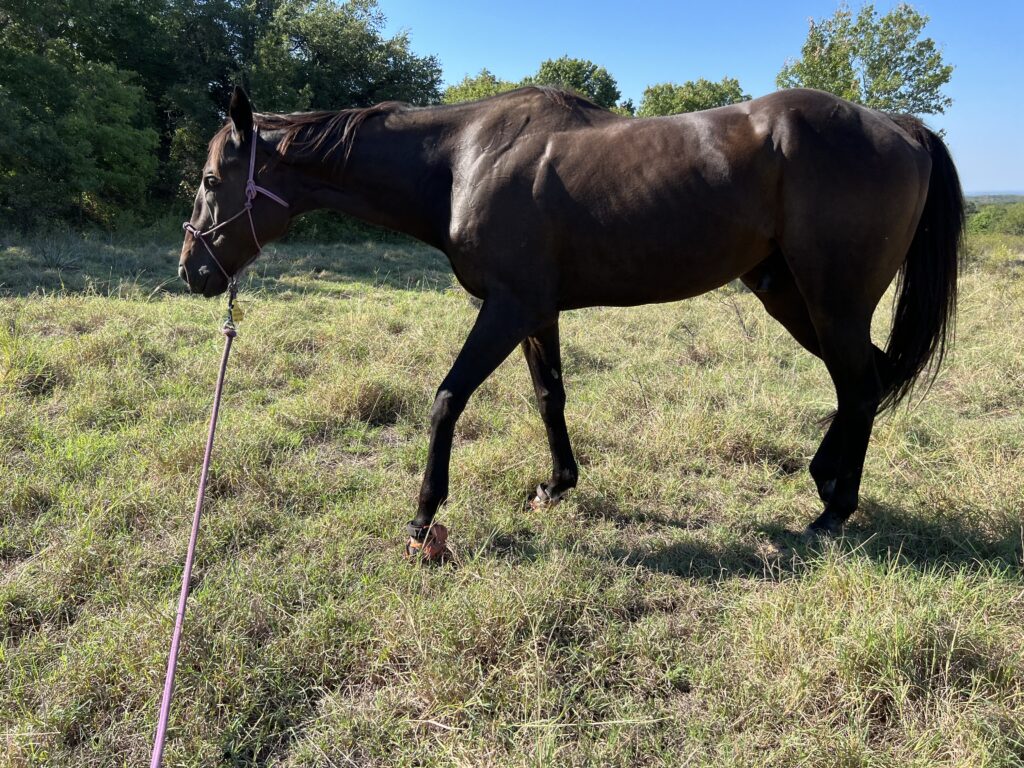
Fortunately, I’ve been able to help him with a team of highly trained specialists who are kind enough to take compensation in the form of all my money. Nothing but the best for my horses. Meanwhile, parts of my house lack finished floors.
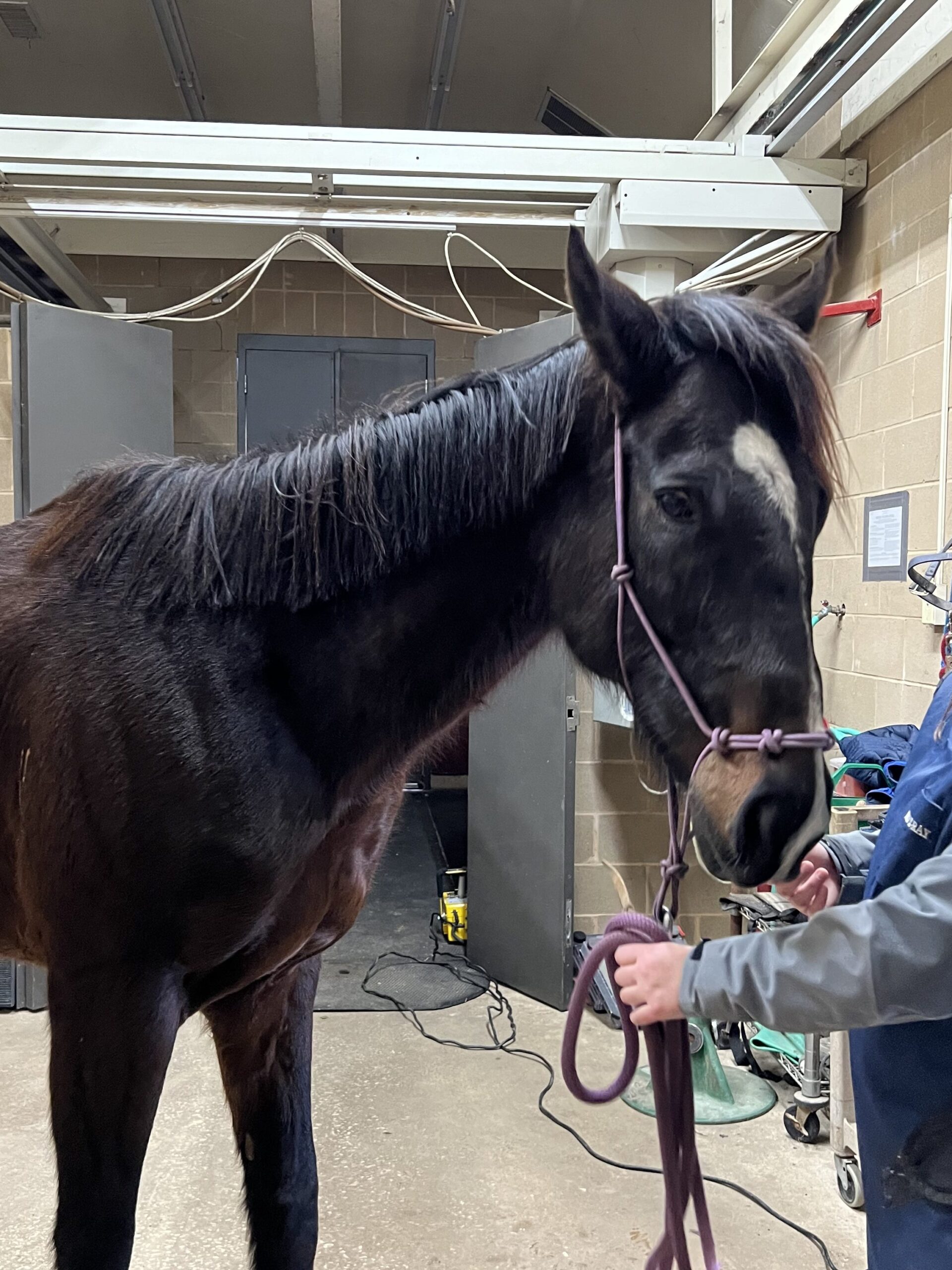

Were I to go back in time and advise 2023 Courtney on next steps, I’d tell her to bring in a farrier/bodyworker immediately, get X-rays immediately, and start the foot rehabilitation process immediately rather than months in thinking he’d grow foot naturally on his own without much aid (wrong).
As of the writing of this post, Hondo has two front composite shoes. His back feet have grown enough sole that he can be shoeless in the back. The hope is that’ll translate to his fronts.
Two: Bravery
On the plusity-plus side, Hondo Lane is almost fearless. While no horse is truly “spook proof” or entirely “bombproof,” I feel as if Hondo comes within striking distance. What do I mean by that? Well it seems like Hondo has seen everything. As he acts as if he’s seen everything.
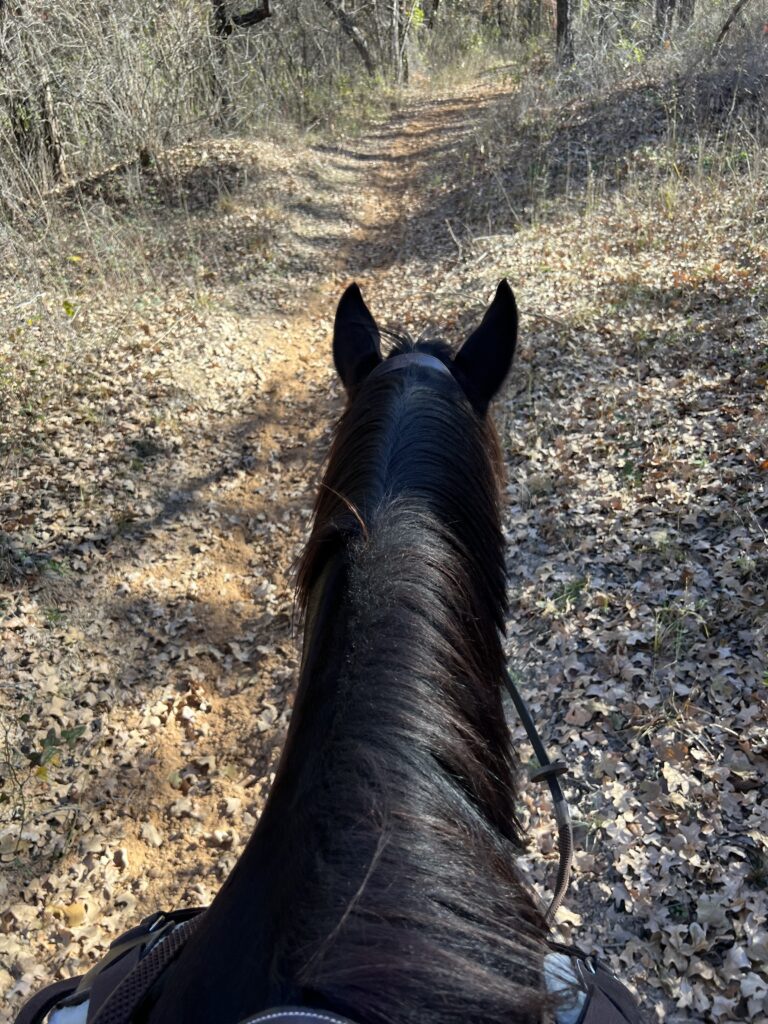
Even when he does encounter a new thing, he considers it first rather than jumping sideways, snorting, or revving up his heart rate to “I AM GOING TO DIE AND I AM TAKING YOU WITH ME” speeds. This has made it easy for me to trust him. I consider him one of the better trail horses I have (and I have veterans) because of it.
Three: He carries track trauma
Hondo loves new things. He doesn’t like “old” things. Saddling, hoof work, or getting in the trailer. Without regaling everyone with what a giant hippy I am as an equestrian, lemme say that I believe most horses are honest and good, willing to be your partner if you’re willing to partner with them. Partnership requires active listening, not commanding.
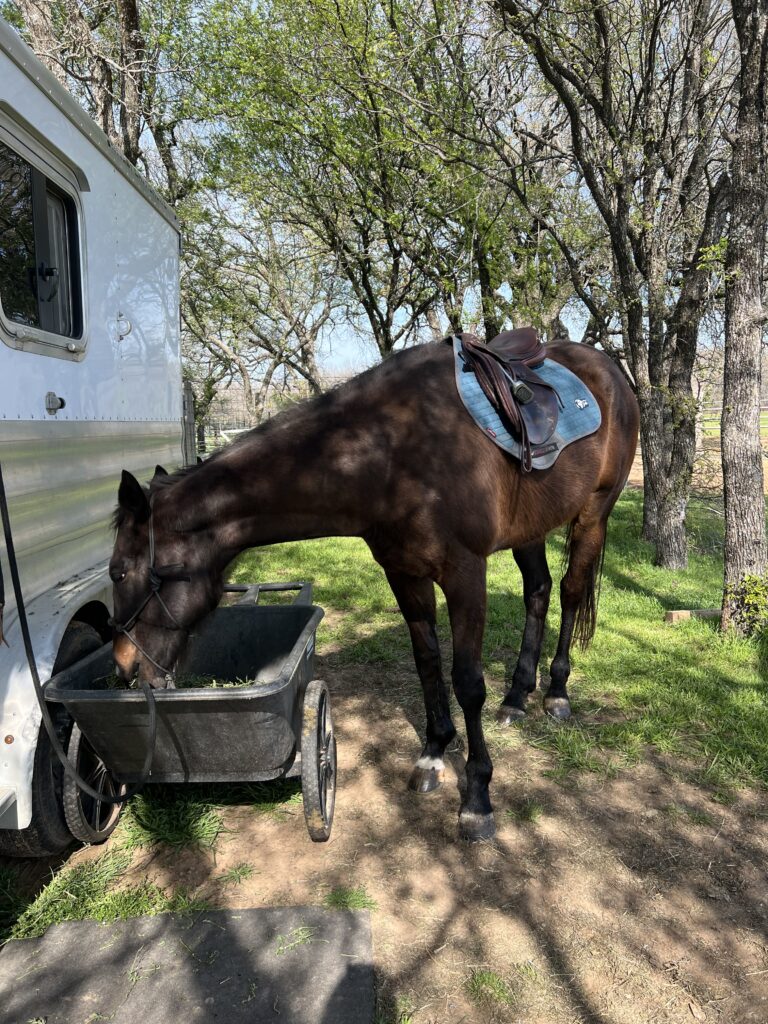
Hondo engaged in what I called “Rain Man” behavior: rocking his head back and forth like an autist told his programs were canceled. He bobbed when experiencing high stress, be that anxiety or excitement. He also air-cribbed or “wind sucked” for months. I do not stall horses, I have paddocks and giant pastures, but he would wind suck when he was “alone” in a paddock or field by himself (with horses right on the other side of the fence, so he’s also a little dramatic).
Over the course of one full year, I addressed Hondo’s stress responses by not telling him to “work through it” and deal (which is insane), but by going to the source of the issues and addressing them one by one. Usually by slowing down and reading his cues. My ranch is not the race track. We’re in no rush. We’re in no need to hurry up. It’s an easy and calm environment.
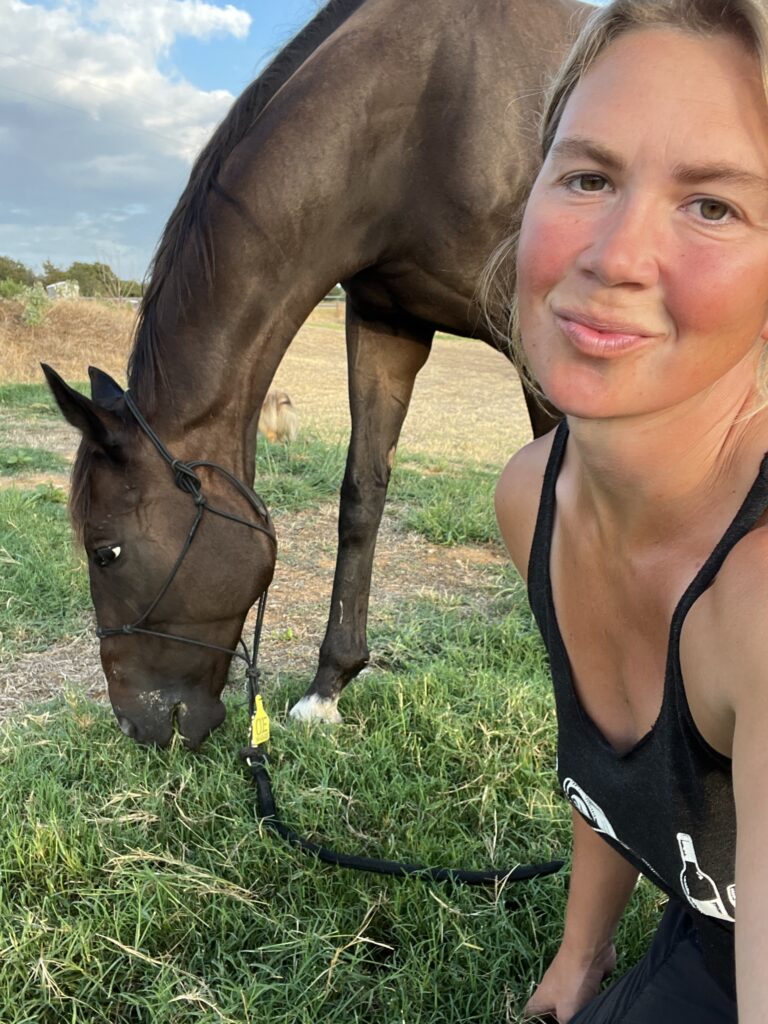
We relearned how to trailer. Of course he knew how to trailer, he was a race horse. But he didn’t want to get in the trailer for whatever reason. I suspect because he didn’t want to leave and go somewhere unknown. But that’s just a guess. It took a full afternoon of some Warwick Schiller training methods and a lot of patience that I don’t always have laying around, and he finally got it and chilled. He also just doesn’t like being alone. At all. Be that in the trailer or in the field. He’s fine in the trailer if I can stand there next to him and tell him how brave he is (the bravest), but starts pawing when I’m outside of the trailer and needing to drive. I’m not sure how I can be in two places at once for him, but I’m going to try.
We slowed the saddling process (and got a saddle fitter to properly fit the saddle to him), and I spent a lot of down time with him just hanging out with him as he grazed. In essence, I became more to him than just his rider. I am his person and his partner, and this process will evolve and continue until Hondo jumps into the big pasture in the sky.
Four: Abundant heart and enthusiasm
If my OTTB was a gif, it would be this one:

That is the best way I can describe him. He gives so much of his heart to what it is he does. Hondo coaches me. He’s my corner man, yelling GET IT TOGETHER!
It doesn’t matter what it is we’re doing, he’s going to do it the BEST WAY HE CAN. And if he’s not allowed to do it THE BEST WAY HE CAN, he gets annoyed with the situation and tells me about it with the Rain Man head bobbing, jigging sideways, and the occasional head toss. He’s not being dangerous, he’s not being naughty. He’s excited and he’s R-E-A-D-Y.
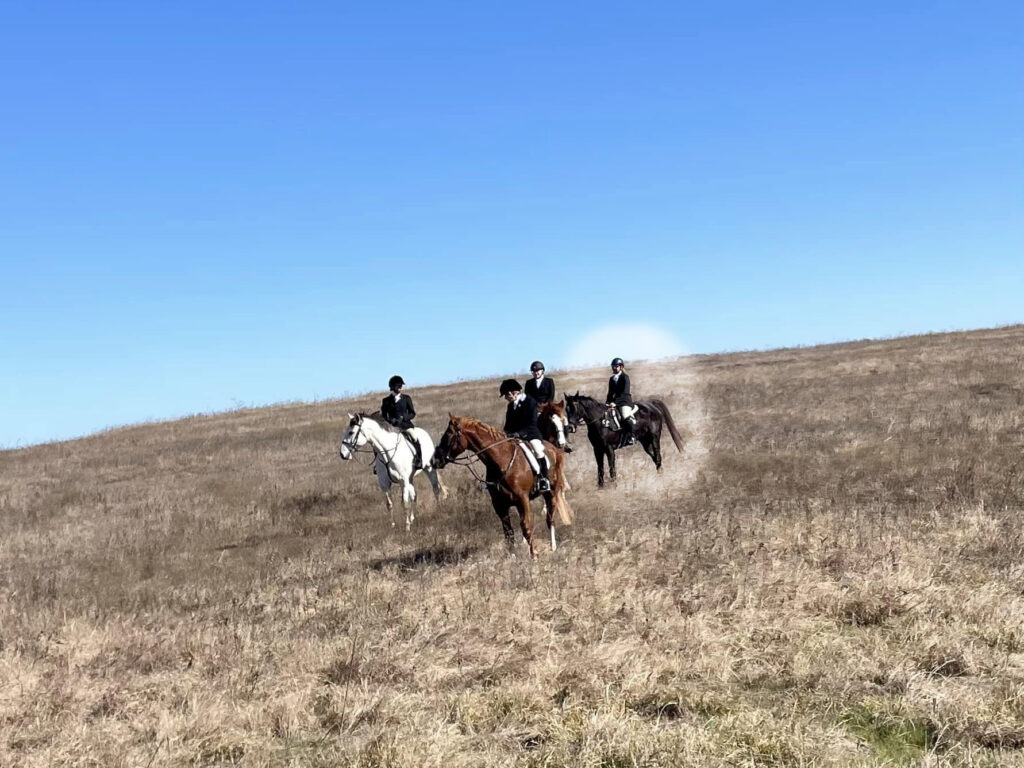
I now understand videos of those jumpers fighting their riders to GO FASTER at a jump. That’s my Hondo. He wants to DO IT and DO IT RIGHT and DO IT FAST.
It is this trademark Thoroughbred passion that makes his maintenance costs worth it. He is so much fun to ride because HE is having so much fun.
Five: “What the heck is a hill? What’s a turn?”
You ever seen a funky looking bug and gone, “What in the actual hell is that?” Yeah, that’s how Hondo reacted to the idea of being led down a hill with tall grass and weeds.
After seeing he wasn’t drinking from his tub of fresh water, in May, when it’s mother effing hot, I took him to drink from my stock pond. I did this three times a day so he wouldn’t wither and die.
In leading him to the natural water source, he had to go down a hill.
“A hill? What in tarnation is a hill? And how do I go down it? What, even, is this ‘down’ you speak of? Where does one place one’s feet to go ‘down’ a ‘hill’?” Obviously he figured this out and guzzled water once at the pond, but the first few times was like watching a child discover Play-doh. I even remember telling him that one day soon he’d be cantering down such things.
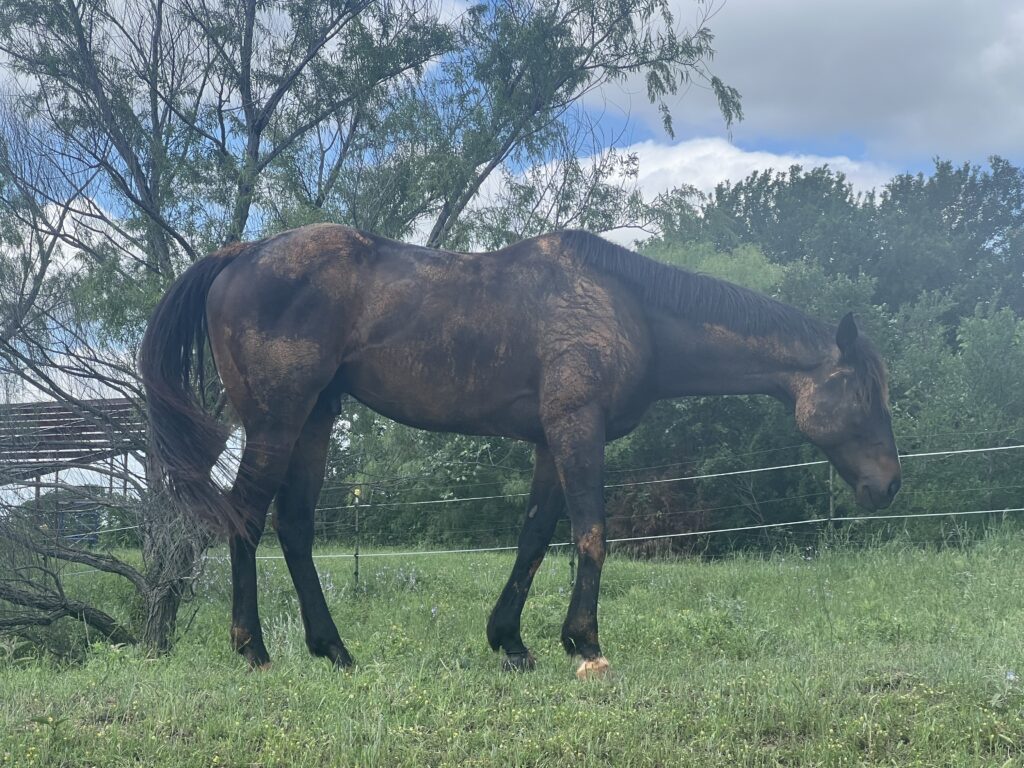
Then, too, came “turning.” Like what does that mean, to turn?
I know he was worked with when he came off the track, working obstacles, light jumping and desensitizing. But I was working with a horse who’d spent most of his life running as fast as he could in straight lines. It was going to take more than a few months for him to understand that, when one is cantering, one cannot run into a fence, one must turn and in a way that wasn’t leaning over like a motorcycle, but bending around my inside leg. Not to be confused with going faster and faster.
I’m thrilled to report that, after one year, Hondo loves running up and down hills and can turn just fine.
Conclusion
I consider Hondo Lane to be my first OTTB because I do see another in my future, probably some time after I get my finances in order and/or I stumble upon a bag of cash in a badly hidden drug drop. Stranger things have happened, don’t knock my dream. This lovely goof ball is a joy to have in my life. He’s sweet-natured, kind, brave, and has never met a horse he doesn’t like. Social awkwardness was not a topic I discussed above, but Hondo loves everyone. Everyone doesn’t love Hondo back, but he’s generally well-regarded by his equine cohorts. Especially the horny mares.
If you’re considering adding an OTTB to your herd, do take my advice on the radiographs of the feeties with a bodyworker/farrier on standby. The initial cost is a bit much, but the improvement to the horse’s life is well worth it. Then make sure to find a job your horse loves and he’ll give you everything he’s got. And do lemme know when you want to hit a bank.
